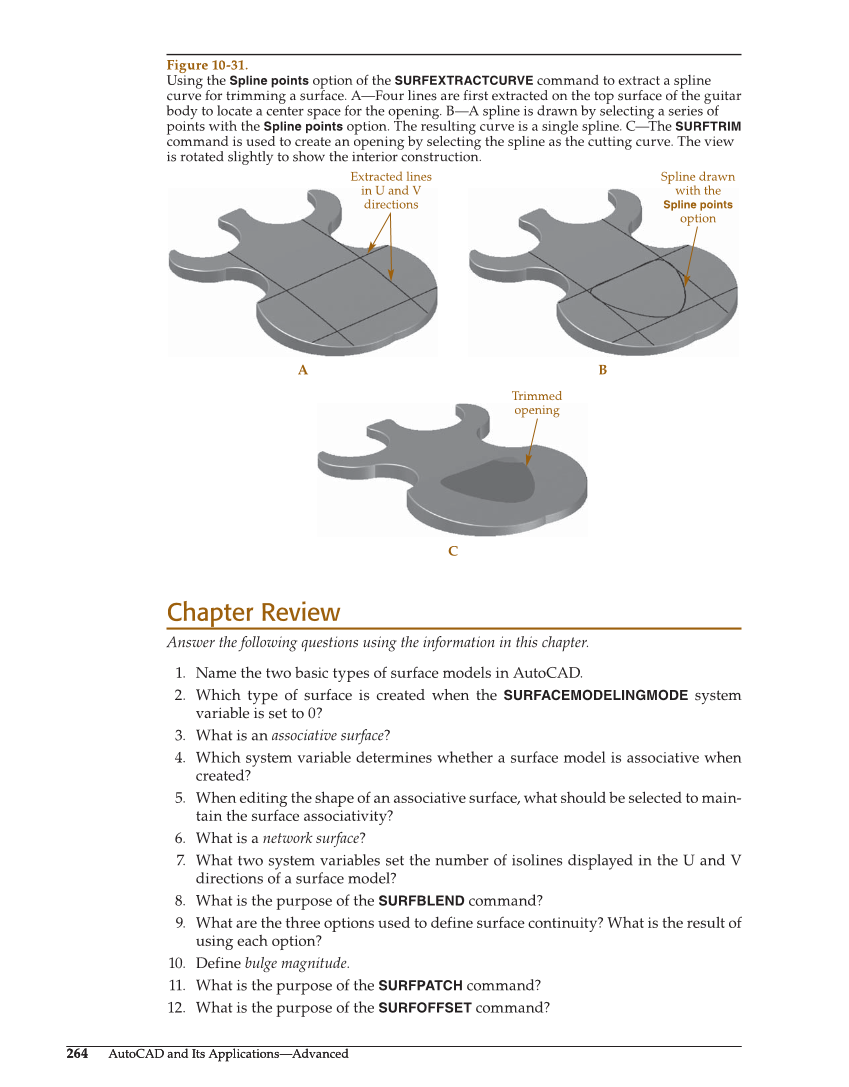264 AutoCAD and Its Applications—Advanced 264 AutoCAD and Its Applications—Advanced Chapter Review Answer the following questions using the information in this chapter. 1. Name the two basic types of surface models in AutoCAD. 2. Which type of surface is created when the SURFACEMODELINGMODE system variable is set to 0? 3. What is an associative surface? 4. Which system variable determines whether a surface model is associative when created? 5. When editing the shape of an associative surface, what should be selected to main- tain the surface associativity? 6. What is a network surface? 7. What two system variables set the number of isolines displayed in the U and V directions of a surface model? 8. What is the purpose of the SURFBLEND command? 9. What are the three options used to define surface continuity? What is the result of using each option? 10. Define bulge magnitude. 11. What is the purpose of the SURFPATCH command? 12. What is the purpose of the SURFOFFSET command? Extracted lines in U and V directions Spline drawn with the Spline points option A B C Trimmed opening Figure 10-31. Using the Spline points option of the SURFEXTRACTCURVE command to extract a spline curve for trimming a surface. A—Four lines are first extracted on the top surface of the guitar body to locate a center space for the opening. B—A spline is drawn by selecting a series of points with the Spline points option. The resulting curve is a single spline. C—The SURFTRIM command is used to create an opening by selecting the spline as the cutting curve. The view is rotated slightly to show the interior construction.
